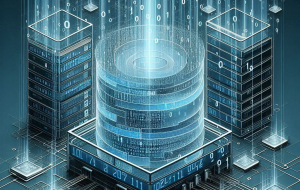Virtualization, the Cloud, and Mobile Computing Combining to Create Computing Fourth Wave
![]() Three major computing trends, each originating in a different set of vendors and seemingly separate and, to a large extent, driven by different market forces and technologies, are combining to create a new wave of computerization and an associated shift in the balance of power in the industry.
Three major computing trends, each originating in a different set of vendors and seemingly separate and, to a large extent, driven by different market forces and technologies, are combining to create a new wave of computerization and an associated shift in the balance of power in the industry.
This new wave is being driven by the convergence of hardware virtualization, cloud computing, and the new generation of mobile computing — specifically the iPad and the Android, Windows 7, and HP/Palm tablet computers appearing on the market. It is eroding the power of computing platforms such as Microsoft Windows, Apple Mac OS X, and even IBM, and is creating a cross-platform, app-centric environment in which end-users and in particular the consumer marketplace will drive developments in business computing.
Ironically, this new wave is being powered in part by the emergence of the Apple iPad as a major new end-user computing platform, but it will result in a platform-independent computing environment in which increasing amounts of computing resources will be delivered to users from the cloud — either internal or external— and consumed on whatever device — a laptop, smartphone, PDA, or tablet, and probably other kinds of devices in the future — that is convenient at the moment.
Just as I am writing this on Google Docs, using a handheld, and later will edit it on a laptop and then post it on SiliconAngle possibly using a desktop computer — or possibly the handheld again, depending on what is easiest at that moment — so increasing amounts of business as well as consumer applications will be delivered in a totally platform-independent manner. And while all my platforms happen to be Windows, they could just as easily include aMac OS X laptop, an iPad and/or an Android smart phone. One of the major driving forces of this new wave, in fact, is the need to reach mixed populations of different computing platforms.
![]() This became obvious from the interviews SiliconAngle.tv webcast from last week’s VMworld 2010, and in particular from VMware’s virtual desktop (VDI) announcement. While at first glance this might appear to be another thin client scheme, it’s in fact it is something very different — a way to deliver platform-independent services to end-users — a virtualized desktop environment that can either be delivered over the network or downloaded and run offline, plus virtualized, individualized applications that can be used on any handy platform. Cloud computing, which is itself powered by virtualized resources on the backend that provide a new level of flexibility in resource allocation without which cloud services would be impossible to scale, provides another.
This became obvious from the interviews SiliconAngle.tv webcast from last week’s VMworld 2010, and in particular from VMware’s virtual desktop (VDI) announcement. While at first glance this might appear to be another thin client scheme, it’s in fact it is something very different — a way to deliver platform-independent services to end-users — a virtualized desktop environment that can either be delivered over the network or downloaded and run offline, plus virtualized, individualized applications that can be used on any handy platform. Cloud computing, which is itself powered by virtualized resources on the backend that provide a new level of flexibility in resource allocation without which cloud services would be impossible to scale, provides another.
The reason this is important is that consumers, particularly those buying smartphones and iPads today and who may buy other tablets later this year and next, are demanding it. And it is important to SMB CIOs because those consumers are also their senior management and end-users, and when they come to the office they are asking for the same level of computing, often on the same devices, that they are using at home. The same CEOs and CFOs who two years ago were showing off their new iPhones at meetings and calling IT to ask why they couldn’t get their office e-mail on their new toy, are now doing the same thing with their iPads, only this time they want their decision support, ERP, CRM and financial analytics on their tablets.
Not to mention, the first Android major, large-vendor tablet has just been announced in Europe by Samsung, raising the possibility of another population of users, who aren’t attracted to the iPad, getting on the mobile tablet bandwagon. Let’s not forget that Windows 7 and HP/Palm Web/OS tablets are on the near horizon. The only way that internal IT can keep up, much less win this game, is to adopt the virtualization/cloud computing model as quickly as possible.
A message from John Furrier, co-founder of SiliconANGLE:
Your vote of support is important to us and it helps us keep the content FREE.
One click below supports our mission to provide free, deep, and relevant content.
Join our community on YouTube
Join the community that includes more than 15,000 #CubeAlumni experts, including Amazon.com CEO Andy Jassy, Dell Technologies founder and CEO Michael Dell, Intel CEO Pat Gelsinger, and many more luminaries and experts.
THANK YOU









